Photonics HandbookOptics
Filters: Glossary, Equations, Parameters
The following is a list of terms commonly used to describe the spectral characteristics of filters.
JDSU
Attentuation Region (or Blocking) The spectral region over which very low transmission is required. Attenuation requirements are generally specified in percent transmission over a given spectral interval. Example: Attenuation for a narrow bandpass filter centered at 2.0 μm may be specified as absolute transmission to be less than or equal to 0.1 percent, from 0.4 to 1.9 μm and from 2.1 to 3.0 μm.
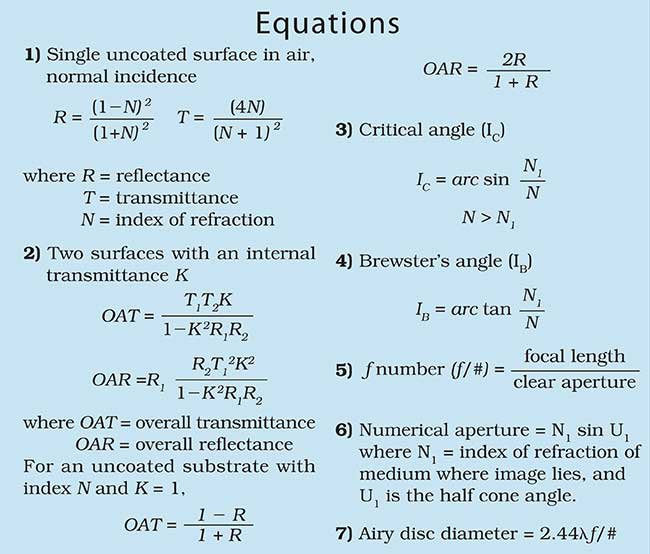
Average Transmission Average transmission is given in percent over a spectral interval. This term is commonly used to specify transmission characteristics of long-wavelength pass, short-wavelength pass and wide-bandpass filters. Typically, the specification might read: minimum average transmission between 3 and 5 μm to be equal to or greater than 80 percent.
Bandpass (BP) Filter Filter designed to transmit energy only within a selected band of wavelengths in the spectrum. These filters can be classified as narrow or wide bandpass filters, depending on the required bandwidth.
Center Wavelength (λo) Center wavelength of a bandpass filter is defined as:

where λ1 and λ2 are in wavelength units and denote the bandpass halfpower points. This is not the simple arithmetical average, because interference filters are linear or symmetrical in reciprocal wavelength, not in wavelength. Example: The center wavelength of a bandpass with halfpower points of 1.6 and 1.8 μm would be 1.694 μm or expressed as λo = 1.694 μm.
Cut-Off (λc) The wavelength specifying the location of the transition from a region of high transmission to a region of low transmission (attenuation). This term is often used for specifying wavelength location of a short-wavelength pass filter. As in the case for cut-on, cut-off wavelength commonly refers to the 5 percent absolute transmission.
Cut-On (λc) The wavelength specifying the location of the transition from a region of low transmission (attenuation) to an adjacent spectral region of high transmission. The term is often used to specify the wavelength location of a long-wavelength pass filter. The wavelength of the 5 percent absolute transmission is commonly used as the cut-on wavelength.
Bandwidth (BW) The width of a bandpass filter between specific absolute transmission points. When expressed in percent, the width is divided by the center wavelength of the band and multiplied by 100 percent. Example: A bandpass filter centered at 5.0 μm is to provide a 1.0-μm bandwidth at the 10 percent absolute transmission points; its bandwidth may be specified as 20 percent at the 10 percent absolute transmission points.
Half-Power Point (HPP) The wavelength at which a filter is transmitting one-half of its peak transmission. For a bandpass with peak transmission of 70 percent, the wavelengths at which it transmits 35 percent would be the half-power points.
Half Width or Half Bandwidth (HBW) Also called full width at half maximum (FWHM). Bandwidth (FWHM) is defined by specifying the half-power points as beginning and ending wavelengths.
Long-Wavelength Pass (LWP)Filters Filters that transmit energy at wavelengths longer than the cut-on. Energy at wavelengths shorter than the cut-on is attenuated.
Peak Transmission The maximum transmission attained by a bandpass filter, expressed in percent. Required peak transmission of a bandpass filter may be specified as minimum peak transmission to be 70 percent. Note that peak transmission usually occurs at the center wavelength.
Short-Wavelength Pass (SWP)Filters Filters that transmit energy at wavelengths shorter than the cut-off. Energy at wavelengths longer than the cut-off is attenuated.
Slope Cut-On or Cut-Off The wavelength interval required to traverse the distance from the 5 percent transmission cut-on or cut-off point to the 80 percent of peak transmission cut-on or cut-off point. Often specified in percent as follows:

Note that λ(5 percent absolute) is the wavelength of the 5 percent absolute transmission point, whereas λ(80 percent of peak) is the wavelength at which the filter is transmitting 80 percent of the transmission of the first peak adjacent to the cut-on or cut-off.
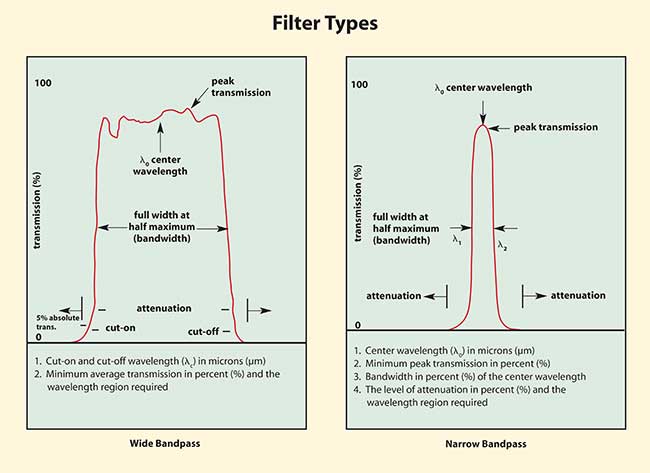
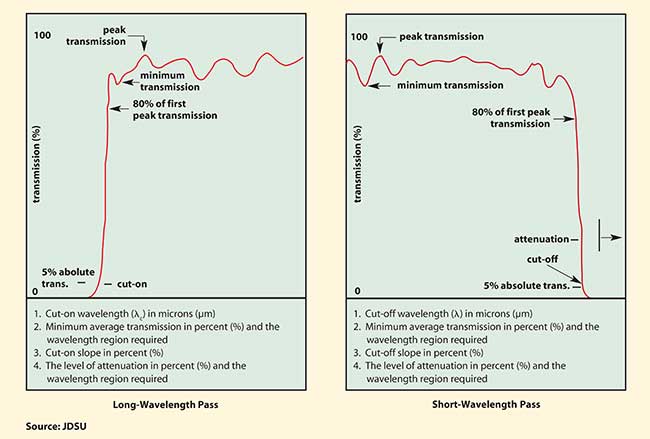
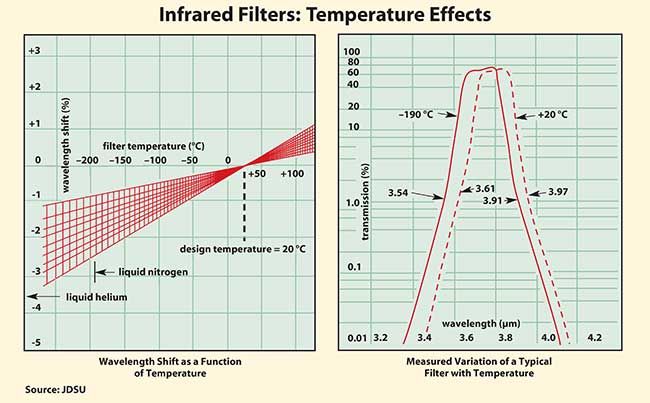
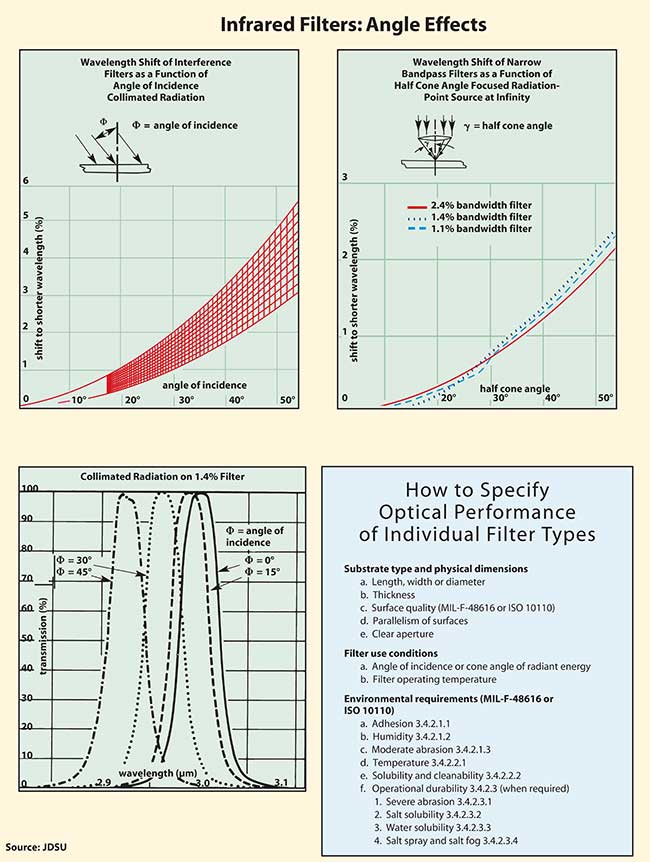
/Buyers_Guide/Lumentum_Operations_LLC/c7335